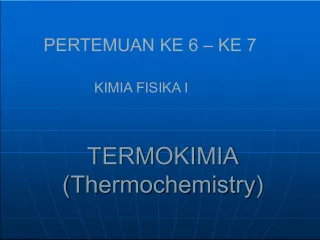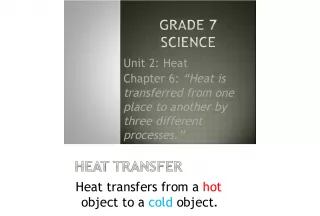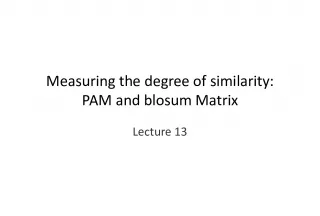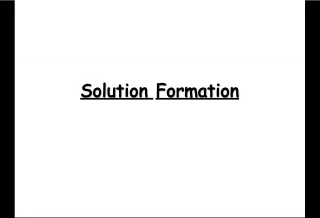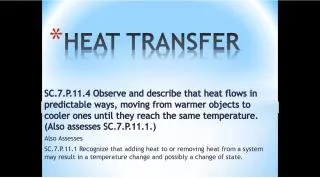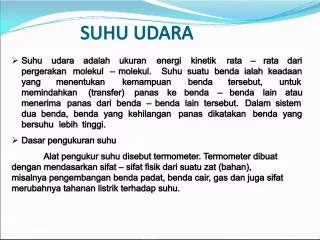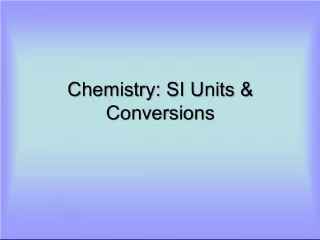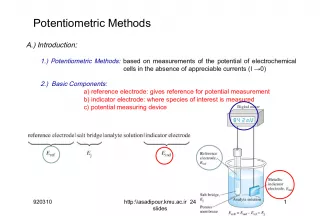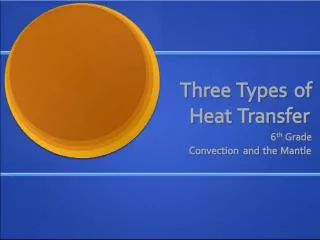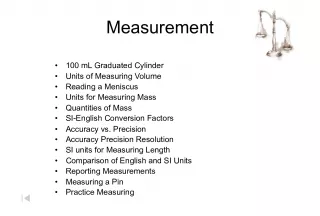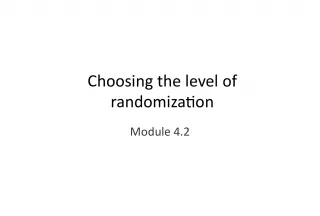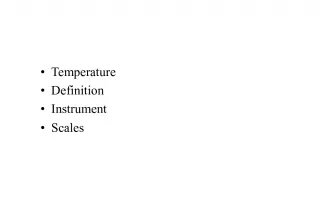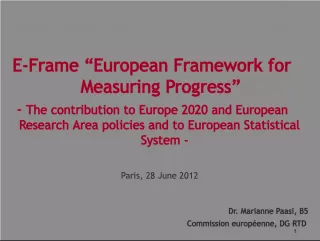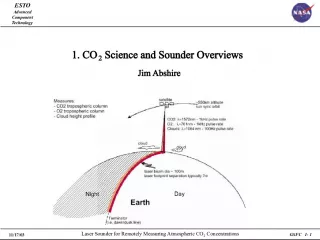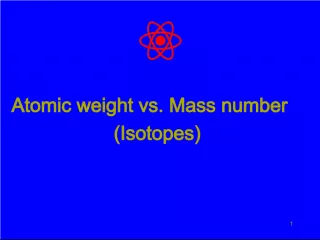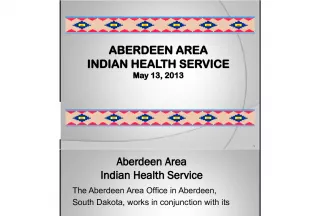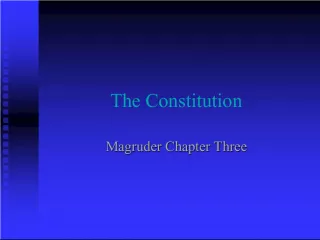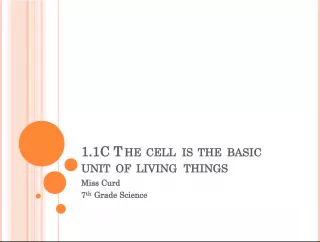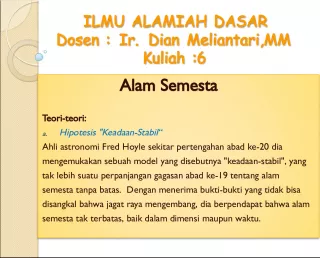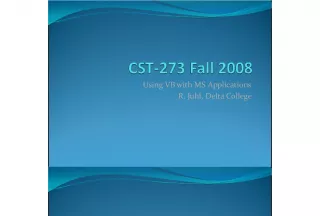Basic Thermochemistry and Units for Measuring Heat


This article discusses basic principles of thermochemistry and the units used to measure heat. It explains that the Joule is the SI system unit for measuring heat, while the calorie is
- Uploaded on | 0 Views
-
 ruby
ruby
About Basic Thermochemistry and Units for Measuring Heat
PowerPoint presentation about 'Basic Thermochemistry and Units for Measuring Heat'. This presentation describes the topic on This article discusses basic principles of thermochemistry and the units used to measure heat. It explains that the Joule is the SI system unit for measuring heat, while the calorie is. The key topics included in this slideshow are . Download this presentation absolutely free.
Presentation Transcript
Slide1Basic Thermochemistry Basic Thermochemistry Courtesy of lab-initio.com
Slide2CA Standards CA Standards
Slide3Units for Measuring Heat Units for Measuring Heat Joule The Joule is the SI system unit for measuring heat: calorie The calorie is the heat required to raise the temperature of 1 gram of water by 1 Celsius degree
Slide4Heat (Enthalpy) Change, Δ H Heat (Enthalpy) Change, Δ H Definition: The amount of heat energy released or absorbed during a process. Definition: The amount of heat energy released or absorbed during a process. Energy Energy Energy is the capacity to do work Energy is the capacity to do work , and can take many forms Potential energy is stored energy or the energy of position Kinetic energy is the energy of motion Thermal energy (heat) is an outward manifestation of movement at the atomic level
Slide5CalorimetryCalorimetry calorimeter The amount of heat absorbed or released during a physical or chemical change can be measured, usually by the change in temperature of a known quantity of water in a calorimeter .
Slide6Exothermic Processes Exothermic Processes Reactants Products + energy Reactants Products + energy Processes in which energy is released as it proceeds, and surroundings become warmer Processes in which energy is released as it proceeds, and surroundings become warmer
Slide7Endothermic Processes Endothermic Processes Reactants + energy Products Reactants + energy Products Processes in which energy is absorbed as it proceeds, and surroundings become colder Processes in which energy is absorbed as it proceeds, and surroundings become colder
Slide8Water phase changes Water phase changes Temperature remains __________ during a phase change. constant
Slide9Phase Change Diagram Phase Change Diagram Processes occur by addition of energy Processes occur by addition of energy Processes occur by removal of energy Processes occur by removal of energy
Slide10Phase Diagram Phase Diagram Represents phases as a function of temperature and pressure. Represents phases as a function of temperature and pressure. Critical temperature: temperature above which the vapor can not be liquefied. Critical temperature: temperature above which the vapor can not be liquefied. Critical pressure: pressure required to liquefy AT the critical temperature. Critical pressure: pressure required to liquefy AT the critical temperature. Critical point: critical temperature and pressure (for water, T c = 374°C and 218 atm). Critical point: critical temperature and pressure (for water, T c = 374°C and 218 atm).
